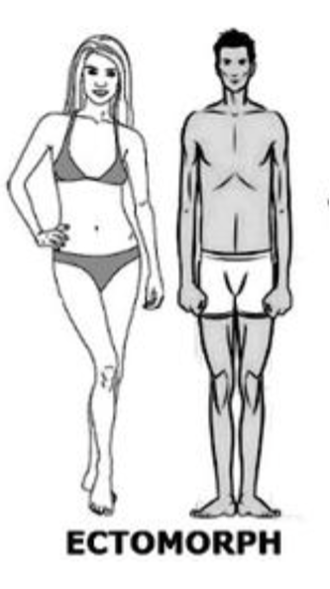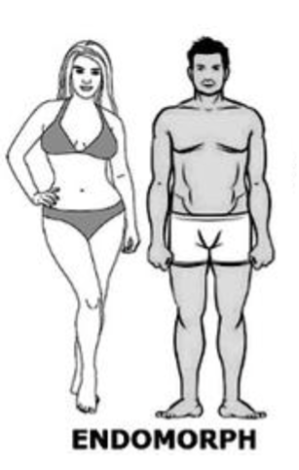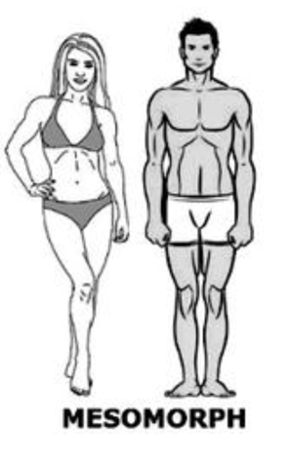Understanding Core Work
May 2021

What body type are you?
Anyone can see just by looking around that no two people are built exactly alike. From body structures to muscle mass to where we store body fat, everyone is made up a little different. We also know that from a performance perspective, everyone comes to the workout with different areas they excel at and areas they struggle with. Some people are great at cardio, while heavy lifting and flexibility might not be so easy for them. Others might be awesome with the weight training, but their endurance might need a little help. The fact is, no two people are exactly alike, and no one is simply amazing at every skill. But the amazing thing is that our bodies are designed to be adaptable, and though you may struggle with one particular area of fitness, it is never a complete life sentence. The fact is, we have the ability to overcome most challenges with a little work and a little knowledge on how to do it.
There are a lot of experts over the years that have tried to narrow down the specific differences in peoples’ bodies and skill sets, and many of them have used different ways to categorize body types. The most common and generally used categories are called the Somatotypes. The somatotypes are a generalized way of looking at body structures and correlating them to typical strengths and weaknesses in fitness. The somatotypes generally classify people into three different categories: Ectomorph, Endomorph, and Mesomorph.
Generally speaking, these three categories classify the most common body types as well as their physical abilities and they can be a useful guide for trainers on how to best train their clients to maximize results over time. It is important to keep in mind that these three categories are generalizations, and people often don’t fit perfectly into one single category. We are all a bit of a hybrid of some of these characteristics, but by identifying what that hybrid is, we can begin to look at what areas we should be focusing on in our workouts and what to look out for as we progress.

ECTOMORPHS:
The Ectomorph Somatotype is typically long and leaner with long arms and legs and narrow shoulders.
This somatotype is typically (but not always) taller and has a harder time putting on lean muscle mass. They are more resistant to gaining body fat than other body types, but that does not mean that they are always at a healthy weight.
Generally, they are very adept at long bouts of medium intensity aerobic exercise but really struggle with heavy weightlifting or high-intensity exercise.
When an Ectomorph puts on body fat, it typically localizes in the belly or midsection rather than the lower body or upper body. Ectomorphs typically need to strengthen their anaerobic (higher intensity) cardio ability as well as focus on gaining lean muscle mass. If you are an Ectomorph and you want to maximize the benefits of your training regimen, focus on shorter bouts of high-intensity cardio training and go a little heavier in the weight room for strength training. Try to get about two high-intensity cardio workouts per week and mostly prioritize strength/resistance training. Aim to lift weights that fatigue the muscles within 8-12 reps. Try to limit your longer, less intense cardio training since you are probably already really good at it. You’ll want to play to your challenges to see the best results.
In the kitchen, it would be a good idea to make sure you are getting plenty of protein and healthy carbs.
You are trying to gain muscle mass, so you’ll need to make sure all the building blocks are there. Make sure you are getting the full three meals a day, especially as you are in training. Also, be sure to watch your stress level since stress hormones like cortisol work well in this group and can lead to excess belly fat.

ENDOMORPHS:
Endomorphic somatotypes are the most common body type of the three. Somewhere around 60% of Americans fall into this category genetically.
These types typically tend to carry more body weight as their metabolism is a bit slower. The legs and arms are generally thicker, and they are often shorter in stature. When body fat is gained, you’ll see a lot of it tend to show up in the lower body, though not always. Muscle mass is typically on the smaller side, but they do have an easier time building up muscle mass than their Ectomorph counterparts. In the gym, these somatotypes tend to feel more comfortable with slower, heavier weight training and sometimes feel better with short, intense cardio bursts as opposed to long cardio workouts.
The main goal for Endomorphs is to lose body fat while maintaining lean muscle. Endomorphs would benefit the most from 3-4 cardio sessions each week, making sure to vary up the type of cardio. You could do 2 sessions of longer, consistent intensity cardio (like jogging, cycling, swimming, or step aerobics) and two sessions of high-intensity cardio that provides big bursts of intensity followed by short rest breaks (like H.I.I.T. or most bootcamp workouts where the intensity goes up and down throughout the workout). Strength training will also be important for this group as it will help boost up your metabolic rate. Circuit training is an excellent option for this group since it will help build muscle mass while still getting that cardio training in. The diet for this group is simple and clear – limit all high fat and high sugar foods. Limit carbs and try to make sure you are getting plenty of protein and fiber. Try to completely avoid processed foods and replace your starchy carbs like pasta and potatoes with healthier carbs like vegetables. Starchy carbs tend to create a hormonal environment that makes it tougher to lose body fat.

MESOMORPHS:
Of the three somatotypes, Mesomorphs have the easiest time putting on muscle mass. You’ll see this body type more often in men, but women can also be mesomorphs. This body type typically has good muscle definition and is typically pretty strong.
But it’s not all perfect for mesomorphs… it is also very easy for this body type to put on body fat. Typically, the fat would build up evenly throughout the body or sometimes more in the upper body, creating the “apple shape” body in some severe cases.
Generally, most mesomorphic types feel right at home in the weight training room but would need a little more motivation to get on the treadmill to do cardio. They are generally very strong and put on muscle very fast. But the cardio aspect often gets skipped. This group should make sure to get about 3-4 cardio workouts each week. Try to focus your strength training on being as well-rounded as possible. This group gains muscle and strength very fast, so if some muscle groups get skipped or neglected while others become stronger and stronger, this process can lead to joint imbalances and make you much more prone to injury over time. If you do not want to gain more muscle mass, choose lighter weights for strength training and aim for 16-20 repetitions per exercise. Most importantly, you’ll need to make sure that your cardio regimen is consistent, strong and includes both high-intensity workouts with long medium intensity workouts. Also, be very sure that a flexibility regimen is involved in your workouts to further prevent injury along your way.
In terms of diet, just like in the exercise choices, it’s all about balance for mesomorphs. Unless you have some ambitious weight loss goals, it is recommended you have a balanced diet that includes 50% healthy carbohydrates, 30% lean protein, and 20% healthy fats. Give yourself proper fuel and try to avoid excessive sugars and starchy carbs.
NOT AN EXACT SCIENCE, NOT A LIFE SENTENCE
As you are reading through the three somatotypes, it is probable that you don’t completely fall into one category here. Most people fall mostly into one category but with a few exceptions here and there. The common thread for training purposes is that in order to maximize your results, you’ll want to play toward training your weaknesses. For example, of you are an endomorph, but you feel really strong in your cardio training, but not so great with the weights, you should amend your training regimen to include more weight training. There is no one-size-fits-all approach to these categories, but rather, they give a generalized view of what training should look like, and what complications to look out for. Awareness is key, so it’s important to identify what your own uniqueness lies and always work on the challenging parts to begin seeing the changes you want. Remember, none of these somatotypes are life sentences. We are given a genetic starting point, but it is completely possible to change your body from one somatotype to another (within some certain boundaries). It happens all the time, but it takes diligence and attention to those details as you progress.
Address
San Francisco, Bay Area
Tel: (925) 954-8499